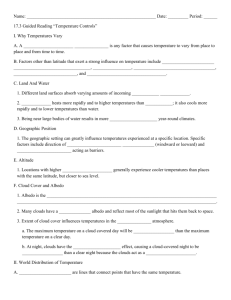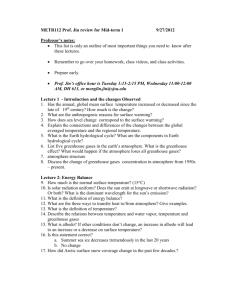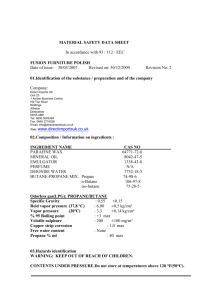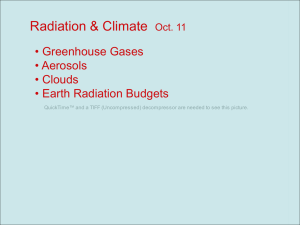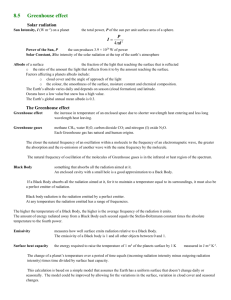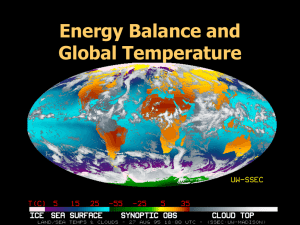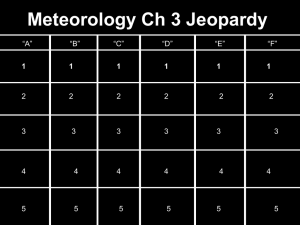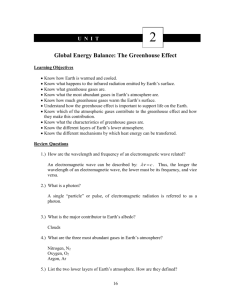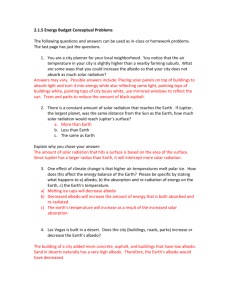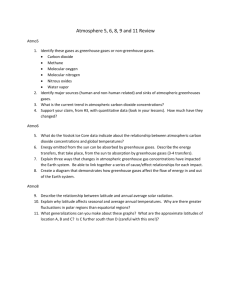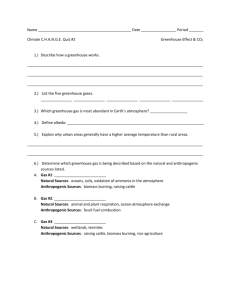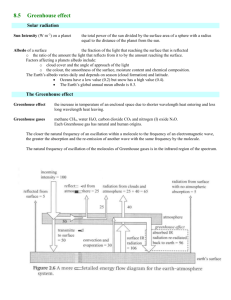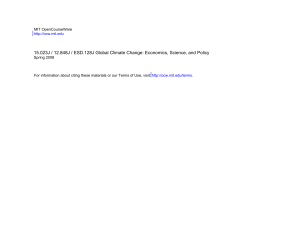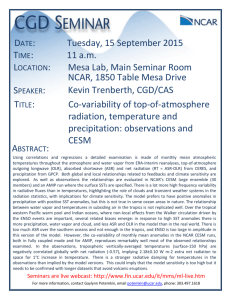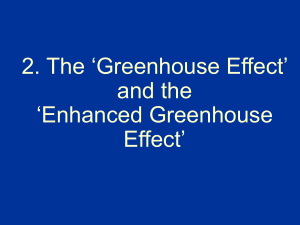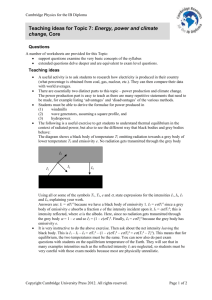here
advertisement
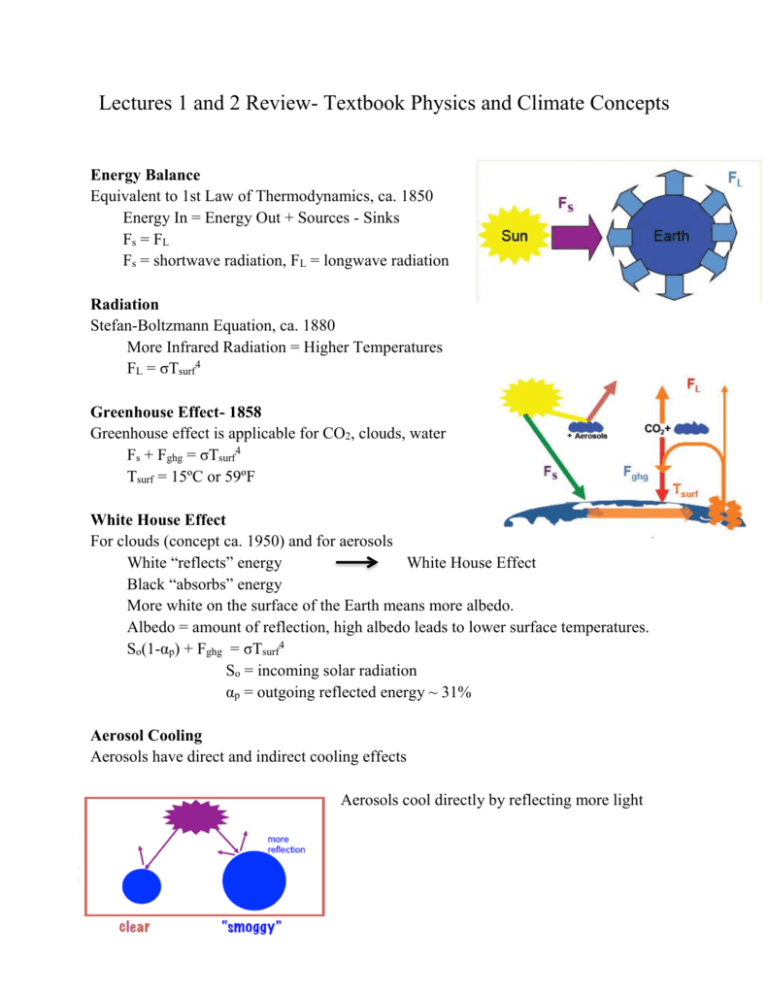
Lectures 1 and 2 Review- Textbook Physics and Climate Concepts Energy Balance Equivalent to 1st Law of Thermodynamics, ca. 1850 Energy In = Energy Out + Sources - Sinks Fs = FL Fs = shortwave radiation, FL = longwave radiation Radiation Stefan-Boltzmann Equation, ca. 1880 More Infrared Radiation = Higher Temperatures FL = σTsurf4 Greenhouse Effect- 1858 Greenhouse effect is applicable for CO2, clouds, water Fs + Fghg = σTsurf4 Tsurf = 15ºC or 59ºF White House Effect For clouds (concept ca. 1950) and for aerosols White “reflects” energy White House Effect Black “absorbs” energy More white on the surface of the Earth means more albedo. Albedo = amount of reflection, high albedo leads to lower surface temperatures. So(1-αp) + Fghg = σTsurf4 So = incoming solar radiation αp = outgoing reflected energy ~ 31% Aerosol Cooling Aerosols have direct and indirect cooling effects Aerosols cool directly by reflecting more light Aerosols indirectly cool by causing more clouds to form that reflect more light Intergovernmental Panel on Climate Change (IPCC) 2007 report The IPCC summary states that: “Warming of the climate system is unequivocal, as is now evident from observations of increases in global average air and ocean temperatures, widespread melting of snow and ice, and rising global mean sea level.” “Most of the observed increase in globally averaged temperatures since the mid--‐20th century is very likely due to the observed increased in anthropogenic greenhouse gas concentrations.” IPCC, 2007: Summary for policymakers. In Climate Change 2007: Impacts, Adaptation and Vulnerability. Contribution of Working Group II to the Fourth Assessment Report of the Intergovernmental Panel on Climate Change. M.L. Parry, O.F. Canziani, J.P. Palutikof, P.J. van der Linden, and C.E. Hanson, Eds. Cambridge University Press, pp. 7-22

